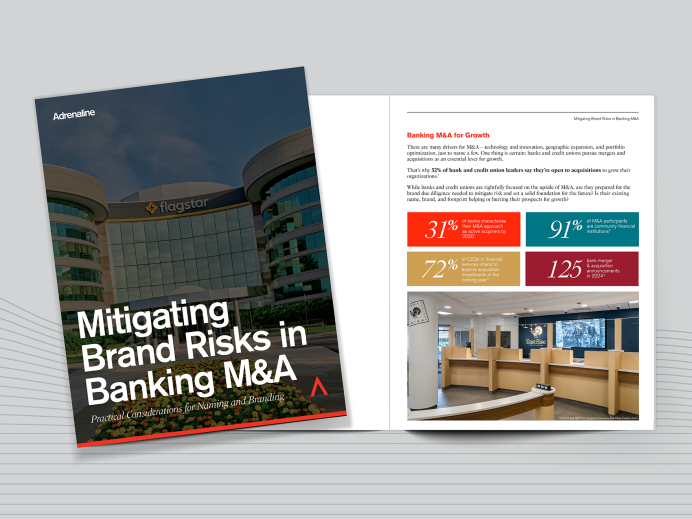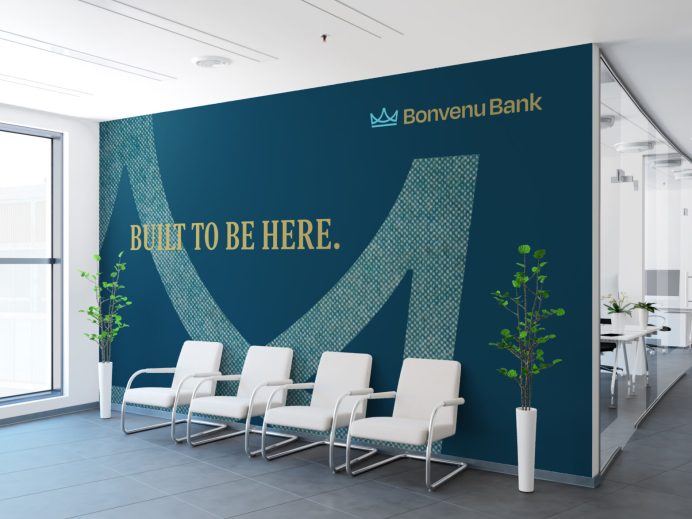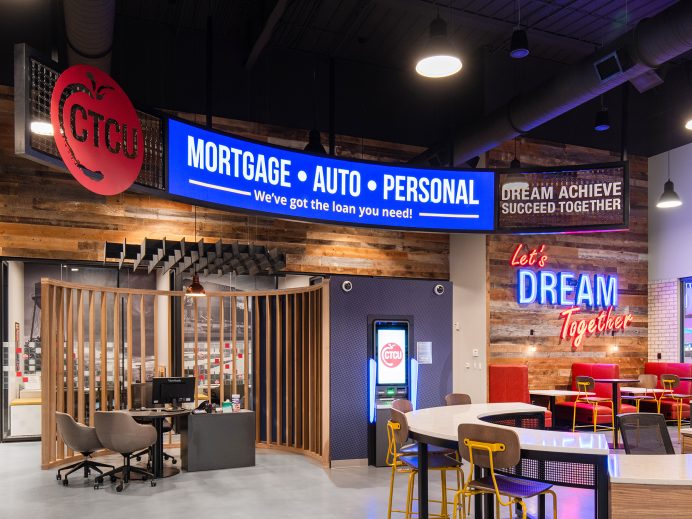Authentic inclusion and diversity efforts should be year-round thinking, not only during June.
With Pride upon us, many organizations have unveiled their campaigns. But do their efforts go beyond a one month push to appeal to a marginalized group – which can appear performative and disingenuous? The LGBTQ+ community has been vocal about companies that roll out big Pride campaigns in June and then remain quiet the other 11 months of the year, and it’s not a great look. In addition to adding rainbows to social ads in June, brands should prioritize making organization-wide changes that foster inclusive experiences and bolster their brand authentically.
Here are some ways that banks and credit unions can create authentic, inclusive environments with a year-round lens and gain the trust and support of their LGBTQ+ audiences.
1. Normalize the sharing of personal pronouns by encouraging and standardizing pronoun use on branch colleagues’ name badges and in email footers. Using a person’s correct pronouns is a show of mutual respect and fosters a more welcoming environment for both employees and customers. While using personal pronouns should remain a personal choice and not a mandate, the best leaders model the behavior they want to see. Incorporating inclusivity into company culture starts at the top. Both internally and externally, using gender pronouns fosters a welcome culture for all, where people feel valued and that they belong.
2. Feature same-sex couples and gender-diverse people in imagery, including in mass media advertisements, in-branch merchandising, digital marketing, and social media. The imagery an organization uses is highly influential in shaping the public’s view of a brand’s values. And, data shows that, consumers value this representation. Numerator, a data and tech company, reported that 63% of consumers say diverse representation in advertising is important, and 47% are likely to buy from brands that feature diversity. In addition, 44% say LGBTQ+ representation is important, especially among Black, Gen Z and Asian cohorts.
3. Train banking and investing teams on considerations and customized advice for LGBTQ+ couples and families to best protect and grow their money. In 2022, US Bank doubled-down on its LGBTQ+ community commitment with a research study, “The LGBTQ+ Financial Landscape,” to better understand the unique challenges and opportunities the LGBTQ+ community experiences with finances. LGBTQ+ individuals may face different fiscal complications, such as less financial support from family, causing them to take on more debt, a dramatically higher rate of mortgage application denial, and employment discrimination, just to name a few.
To shed light on the issue, Morgan Stanley’s Institute for Sustainable Investing explored how financial planning for the LGBTQ+ community may require different thinking around home ownership, adoption and parental rights, pensions and survivor benefits, and more.
4. Allow for chosen names to be used on customer’s physical cards, versus the legal name that they do not use. Many people use a preferred name rather than their legal name. This can be as simple as someone’s legal name being Theodore with a preferred use of Ted or using a middle name rather than a birth name. This also includes transgender people. Nearly 70% of transgender individuals said they didn’t have ID or banking documents that match their preferred name.
While people must use their legal name when applying for a bank or credit account in the U.S. – as mandated in Section 326 of the USA Patriot Act – banks, credit unions and credit card companies can choose to allow people to submit a request for a new card with their preferred name on it. Mastercard achieved the gold standard of inclusion with their Acceptance Matters campaign and True Name feature for their credit cards, launched in 2019. Several other credit card companies, banks and credit unions also offer options to use or change to a chosen name.
Inclusion training and processes also go a long way inside the branch and in customer service. Encourage colleagues to put a customer or member’s chosen name and pronouns (should they differ from their legal name) into the notes of the account and reference those when addressing them. Allow customers or members to update their online banking usernames so they are not forced to use a name they do not identify with.
5. Walk the walk internally by prioritizing inclusion in corporate culture, with non-discrimination policies, employee resource groups and participation in local LGBTQ+ organizations. Companies have a long way to go to create a truly diverse and inclusive workplace, as nearly half of LGBTQ+ workers report that they have experienced workplace discrimination. From hiring and employment to lending and account opening, inclusive training programs and policies underscore an institution’s commitment to prohibiting discrimination based on sexual orientation or gender identity. Employee experience builds great customer experience and that parlays into happy shareholders. The more seen and heard your employees feel, the more your brand and business will grow.
Merely widening the tent is not enough, according to International Banker’s Is the Banking Sector Adequately Supporting the LGBTQ+ Community? “Much of the historic evidence strongly implies that adopting this approach has resulted in not every segment being equal but, rather, some demographics – the LGBTQ+ community chief among them – being systemically underserved.” Along with an inclusive environment, ensuring products and services meet the customized needs of the community is essential. In Fintech Magazine’s exploration of LGBTQ+ banking experiences, Andrew Arwas, director of transformation at Chetwood Financial, says “Creating a financial services market where all people feel seen and represented means understanding the unique challenges that people in the LGBTQ+ community face when it comes to managing their money and financial accounts.”
Adrenaline is an end-to-end brand experience company serving the financial industry. We move brands and businesses ahead by delivering on every aspect of their experience across digital and physical channels, from strategy through implementation. Our multi-disciplinary team works with leadership to advise on purpose, position, culture, and retail growth strategies. We create brands people love and engage audiences from employees to customers with story-led design and insights-driven marketing; and we design and build transformative brand experiences across branch networks, leading the construction and implementation of physical spaces that drive business advantage and make the brand experience real.




